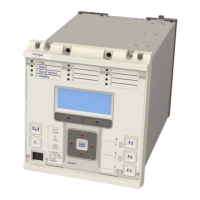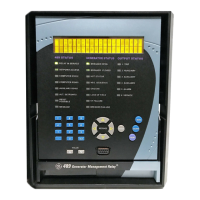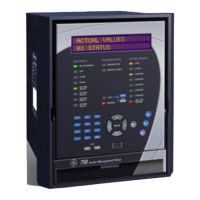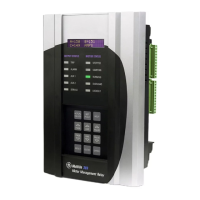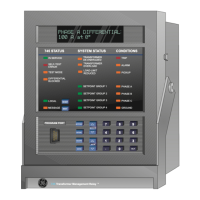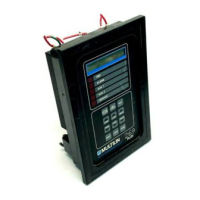10.1.7 RESISTIVE REACH
This is for quadrilateral characteristics only.
Check that the correct settings for phase and ground element resistive reaches have been applied. The relevant
settings are:
● R1Ph, R2Ph, R3Ph, R3Ph reverse, R4Ph and RP Ph for phase fault zones.
● R1Gnd, R2Gnd, R3Gnd, R3Gnd reverse, R4Gnd and RP Gnd for ground fault zones.
Note:
Zone 3 has an independent setting for the forward resistance reach (right-hand resistive reach line), and the reverse resistance
reach (left-hand resistive reach line).
10.1.8
LOAD BLINDER
1. Check that the correct settings for the load blinder have been applied. The settings are at the end of the
DISTANCE SETUP column.
2. Verify that the Load B/Angle cell is set at least 10 degrees less than the Line Angle setting in the LINE
PARAMETERS column.
10.2
OPERATION AND CONTACT ASSIGNMENT
You should inject a fault at half Z1 reach with the intention of causing a distance protection trip.
10.2.1
PHASE A
1. Prepare a dynamic A-phase-to-neutral fault, as detailed above.
2. Set a timer to start when the fault injection is applied and to stop when the trip occurs.
3. To verify correct output contact mapping use the trip contacts that would be expected to trip the circuit
breaker(s) (Any Trip for 3-pole tripping, Trip A for single pole tripping).
4. For two breaker applications, stop the timer when CB1 and CB2 trip contacts have both closed. Monitor by
connecting the contacts in series to stop the timer if necessary.
5. Record the phase A trip time.
6. Switch OFF the AC supply and reset the alarms.
10.2.2
PHASE B
1. Reconfigure to test a B phase fault.
2. Repeat the test, this time ensuring that the breaker trip contacts relative to B phase operation close
correctly.
3. Record the phase B trip time.
4. Switch OFF the AC supply and reset the alarms.
10.2.3
PHASE C
1. Reconfigure to test a C phase fault.
2. Repeat the test, this time ensuring that the breaker trip contacts relative to C phase operation close
correctly.
3. Record the phase C trip time.
4. Switch OFF the AC supply and reset the alarms.
P446SV Chapter 24 - Commissioning Instructions
P446SV-TM-EN-1 637
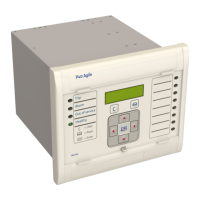
